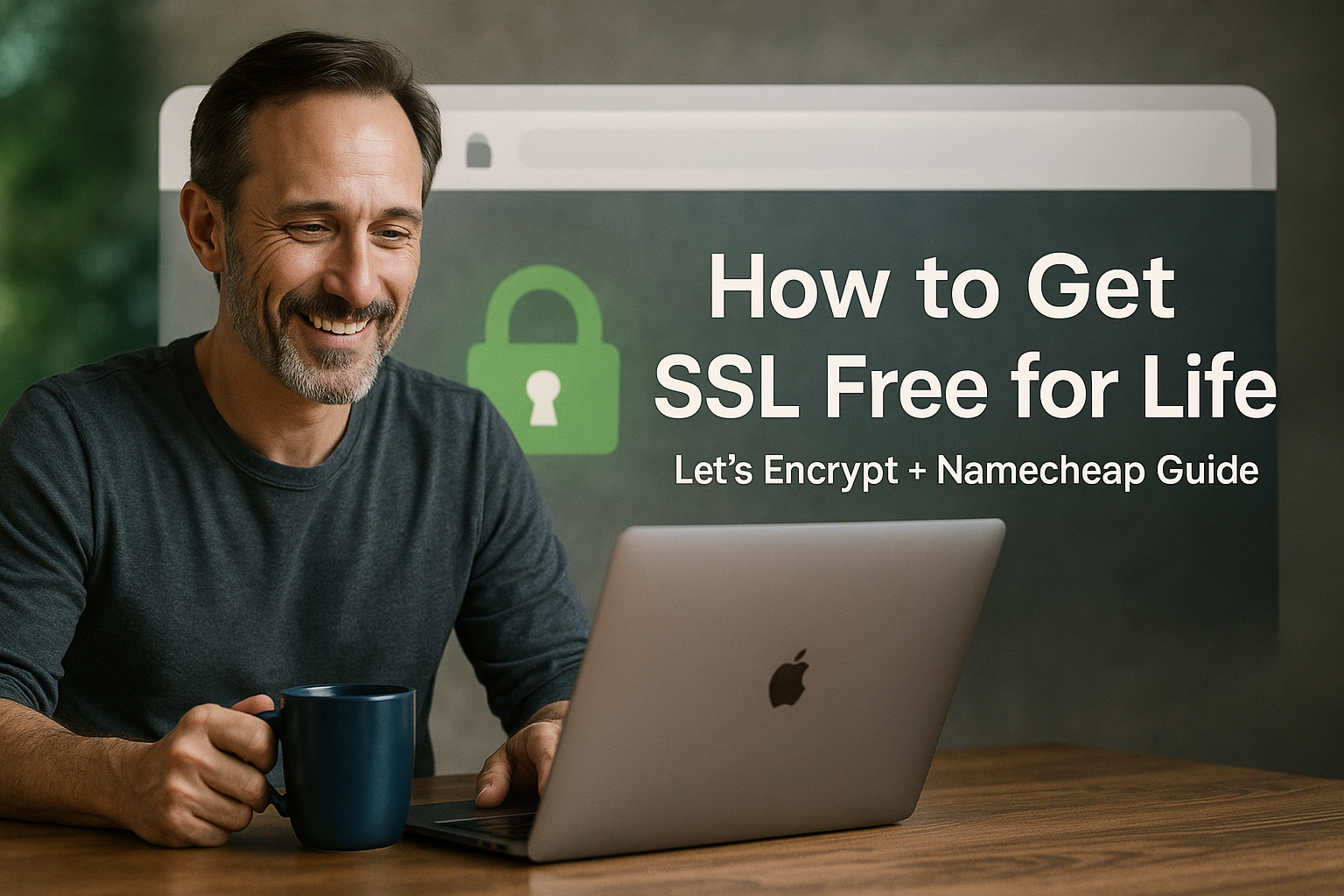You know how frustrating it is to manage a website as a solo-preneur.
First, you have to monitor when your hosting plan will expire. Then, you have to remember when your domain name will expire. And on top of that, you’re expected to pay for that tiny padlock icon you see in the corner of your browser — the one that tells people your website is safe.
That “tiny padlock” is called an SSL certificate. And if you don’t have it, visitors might get a scary warning like:
⚠️ “This site is not secure. Your data might be at risk.”
Not exactly the warm welcome you want for your customers, right? It can instantly make people think you’re trying to scam them — even if you’re legit.
And honestly? Paying for it year after year is just one more expense that eats into your budget.
The Big Question: Can You Get SSL for Free… Forever?
That’s exactly what I started wondering.
I mean, I’m already paying for hosting and domains. Why should I also pay for a little padlock that’s literally just verifying my site to search engines?
So, I went down the research rabbit hole. And what I found was game-changing.
There’s a way to get that padlock — completely free — for life.
No recurring payments. No shady hacks. Just a simple, legit method that’s used by millions of websites.
Wait… What Is SSL, Really?
Let’s break it down without the tech jargon.
SSL stands for Secure Sockets Layer. It basically:
- Encrypts the data between your visitor’s browser and your website.
- Proves to browsers like Chrome, Safari, and Firefox that you are you.
- Makes search engines trust your site more (Google even ranks HTTPS sites higher).
- Stops that ugly “Not Secure” warning from showing.
So yes — it’s kind of important.
And that tiny padlock? That’s the visual proof to your visitors that your site is secure.
The “Forever-Free” SSL Solution: Let’s Encrypt
Enter Let’s Encrypt — a non-profit certificate authority that gives you a free SSL certificate that’s just as secure as the paid ones.
Here’s the twist:
- Paid SSL = Same encryption, plus extras like insurance or business validation.
- Let’s Encrypt = Same encryption, zero cost, renews every 90 days.
And yes, you can set it to auto-renew, so it’s basically free for life.
First Things First: Get Reliable Hosting
Before we even set up your free SSL, you’ll need a good hosting provider that lets you access cPanel and supports manual SSL installs.
I personally use Namecheap — they’ve been solid, affordable, and beginner-friendly for me. If you’re looking to start or move your site, you can sign up here via my link and get hosting + domain at a great price.
How to Set Up Let’s Encrypt on Namecheap cPanel (Step-by-Step)
I use Namecheap for hosting, and here’s exactly how I set mine up — without paying them for SSL.
Step 1: Enable SSH Access
We need a way to run commands on your hosting account.
- Log into your Namecheap Dashboard.
- Go to Hosting List → Manage → cPanel.
- Search for SSH Access and enable it.
Step 2: Connect via SSH
From your computer terminal:
ssh yourcpanelusername@yourdomain.com
Replace yourcpanelusername and yourdomain.com with your actual info.
Step 3: Install acme.sh
This is the magic tool that talks to Let’s Encrypt.
curl https://get.acme.sh | sh
source ~/.bashrc
Step 4: Issue Your SSL Certificate
Tell Let’s Encrypt to create a certificate for your domain.
acme.sh --issue -d yourdomain.com -d www.yourdomain.com --webroot /home/username/public_html
Step 5: Install It in cPanel
acme.sh --install-cert -d yourdomain.com \
--cert-file /home/username/ssl/certs/cert.pem \
--key-file /home/username/ssl/private/key.pem \
--fullchain-file /home/username/ssl/certs/fullchain.pem
Then in cPanel:
- Go to SSL/TLS → Manage SSL Sites → Upload the files.
Step 6: Set It to Auto-Renew
acme.sh --install-cronjob
Now, your SSL will renew automatically every 90 days. You never have to think about it again.
Why This Is a Game-Changer for Solo Entrepreneurs
Think about it:
- No more SSL renewal fees.
- No more worrying about expiry dates.
- You can keep your site secure and Google-happy for free.
That’s money back in your pocket and one less thing to manage in your never-ending website to-do list.
If you’re like me — juggling hosting, domains, and a hundred other solo business tasks — this is one of those hacks that just makes life so much easier.
So, go get that padlock free for life.
Your visitors (and your wallet) will thank you.
And if you need hosting that makes all of this possible, check out Namecheap here — it’s the platform I trust and use myself.

